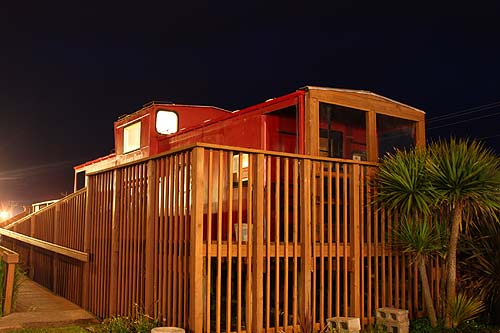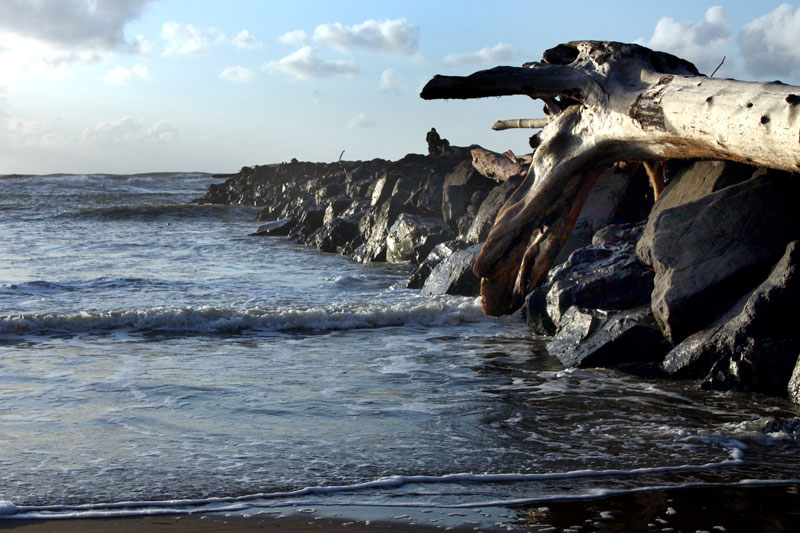Rockaway Beach's Less Obvious Sides Hint at Oregon Coast History, Layers
Published 12/20/21 at 5:42 AM PST
By Oregon Coast Beach Connection staff

Includes exclusive listings; some specials in winter
In Cannon Beach:
Includes rentals not listed anywhere else
In Manzanita, Wheeler, Rockaway Beach:
Some specials for winter
In Pacific City, Oceanside:
Some specials for winter
In Lincoln City:
Some specials for winter
In Depoe Bay, Gleneden Beach:
Some specials for winter
In Newport:
Look for some specials
In Waldport
Some specials for winter
In Yachats, Florence
Some specials for winter
Southern Oregon Coast Hotels / Lodgings
Reedsport to Brookings, places to stay; winter deals
(Rockaway Beach, Oregon) – It’s a place on the north Oregon coast where history and the modern world meet, sometimes in ways you can’t see. In some spots, it’s beneath your feet and you’d have no clue (such as the wreck of the Emily G. Reed, above, that lurks beneath the sands and only pokes out every now and then). In others, it’s hidden in the outline of the buildings you see.
No wonder: Rockaway Beach has been a hotspot vacation spot for over 100 years now, providing fun and repose for generations (see the beginnings of Rockaway Beach). Some of this is obvious, some is not.

Rockaway Beach is, of course, mostly known for its Twin Rocks – the gigantic pair of sea stacks lurking just offshore. Fun fact: they’re actually one big rock. It’s simply been carved into dramatically-disconnected shapes.

Want to get a bit closer to these massive monsters? You can't, really. Unless you have some high-powered optics, as seen here. Then you can check out the lines on these 15 million-year-old-or-so landmarks.
Apparently Twin Rocks got their name a century ago or so from boaters who wandered the western side of the sea stacks. They look nearly identical from the other side, according to some. For a couple of decades of the north Oregon coast town’s existence, Twin Rocks went by other names like Profile Rock.

The Little Red Caboose is perhaps the other big recognizable landmark in Rockaway Beach, standing out by virtue of its color amid everything else blue (or gray, depending on the day). It houses the Chamber of Commerce in Rockaway Beach, along with tons of visitor information.
The caboose is located at the main wayside in downtown. A bit of an elderly remnant itself, the train car is a nod to the town's local history of what was called the “Daddy Train” back in the early part of the 1900's. This was a time when families would hang out during the summer for weeks at a time, but Dad still had to continue working back in the valley. A weekend train would bring the fathers back down for the weekend, hence the term “Daddy Train.”

The caboose is, of course, still red at night. The tropical-looking plants outside provide a striking contrast to the general weather patterns of the Oregon coast.
Train tracks still play an important role in this dreamy beach spot, as the Oregon Coast Scenic Railroad comes through here during the summers and on special dates around the year.

Rockaway Beach's chunk of Highway 101 manages to retain a fascinating sense of history as you travel along, whizzing past these elderly statesmen of local architecture. Many of the buildings seem left over from an Old West town of sorts. It's a bit like traveling into the past along the Oregon coast at times, yet these are often painted modern, bright and very funky colors.

Another major landmark at Rockaway Beach is the south jetty of Nehalem Bay. Constructed about a century ago, the side facing greater Rockaway and Manhattan Beach has a much wilder side to it than the bay side of the rocky structure.

This is evidenced by the gargantuan chunks of logs and trees piled up on it. But this section has its softer side as well, shown here by the reflective quality of the wet sand and a truly tranquil moment next to this powerful place.
Hotels in Rockaway Beach - Where to eat - Rockaway Beach Maps and Virtual Tours
Cannon Beach Lodging
Nehalem Bay Lodgings
Manzanita Hotels, Lodging
Three Capes Lodging
Pacific City Hotels, Lodging
Lincoln City Lodging
Depoe Bay Lodging
Newport Lodging
Waldport Lodging
Yachats Lodging
Oregon Coast Vacation Rentals
Oregon Coast Lodging Specials
More About Oregon Coast hotels, lodging.....
More About Oregon Coast Restaurants, Dining.....
LATEST Related Oregon Coast Articles
Through 2 a.m. likely best, but some lights possible through dawn June 1 - 2. Space weather, astronomy
Rare Sperm Whale Stranding on N. Oregon Coast, Was Hit by Boat
Showing up near Gearhart, it will decompose naturally. Marine sciences
Coast Guard Barque 'America's Tall Ship' Coming to Portland Rose Fest, N. Ore...
Portland events: June 5 - 8; Astoria events June 13 - 15. Weather
Bright and Active Arietids Meteors May Hit Pre-Dawn Hours of Oregon, Washingt...
Look to east hour before sunrise and you may catch a show. Sciences, astronomy, weather
Why Now Could Be a Great Week for Spotting Killer Whales on Oregon Coast - Video
A good dozen documentations around Depoe Bay, Newport, Coos Bay, Bandon, Tillamook. Marine sciences
Summer Road Work, Traffic Issues Along Oregon Coast Include Astoria, Garibald...
Some daylight closures include bridges, OR 22, OR 18, OR 26, more. Travel tips. Seaside, Cannon Beach, Lincoln City. Travel tips
Pacific City Oregon Weather, 7-Day Forecasts, Live Conditions, Radar, Webcams...
Updated Constantly: Pacific City, Tierra Del Mar, Oregon Weather, Cams, Buoy Observations, Tides, Warnings - Alerts
Oregon Coast Has World's Oldest Harbor Seal, Celebrating 50 Years Soon
June 3 at Oregon Coast Aquarium in Newport. Newport events
Back to Oregon Coast
Contact Advertise on BeachConnection.net
All Content, unless otherwise attributed, copyright BeachConnection.net Unauthorized use or publication is not permitted



















































